An easy recipe for homemade guava jam (fresh guavas)
5.5.24
| Recipe by Renz
Are you ready to elevate your jam-making skills to a whole new level? If you've
ever tasted the sweet, tropical delight of guava jam and wished you could
recreate it at home, then this recipe is for you. Whether you're a seasoned jam
enthusiast or a beginner in the kitchen, you can make this delicious recipe with
simple ingredients.
Guava jam, made with fresh or frozen guava pulp, is a delightful way to incorporate this tropical fruit's unique texture and flavor into a sweet and tangy spread.
Having guava jam in your household is a treat for the taste buds. The jam's unique variety of flavor, with its combination of sweet and tangy notes, makes it a delightful addition to breakfasts, snacks, and desserts.
Your family will enjoy spreading it on toast, and pastries, and even using it to sweeten and flavor homemade yogurt or ice cream.
Fresh guavas are just an amazing fruit with so many uses like fresh guava juice, guava ice cream, and guava cheese.
This guava jam recipe is too easy to mess up.
Guava jam is a sweet and tropical fruit spread using ripe guavas. To make, the fresh guavas are pureed and the puree is combined with sugar and simmered till thickened. jam, the first step is to prepare the guava puree by blending ripe guavas until smooth. The resulting jam has a vibrant pink color and a sweet, fruity flavor with a hint of tartness.
The texture is smooth and spreadable, making it perfect for spreading on toast, pairing with cheese, or using as a filling for pastries and cakes.
It's a quick and easy recipe that allows you to enjoy the delicious flavor of guavas year-round. With its tropical taste and smooth texture, guava jam is a delightful addition to any breakfast or snack.
Making your own guava jam offers a multitude of benefits that make it a worthwhile endeavor. Firstly, the versatility of guava jam is unmatched - it can be used as a spread on toast or crackers, a filling for pastries or cakes, or even as a sweet and tangy dip for snacks. Additionally, there is immense joy in gifting homemade guava jam to friends and family, as it is a thoughtful and delicious present that shows you care.
Creating guava jam at home is a simple process that requires minimal ingredients and easy steps.
Homemade jam is a better option than buying store-bought jam because you have complete control over the ingredients, ensuring a healthier and more natural product. You can also adjust the sweetness and flavor to your preference, and you can avoid any artificial additives or preservatives. Plus, it's a satisfying and rewarding experience to create your homemade jam.
In this section, we will take a look at some of the key ingredients for making this tropical jam.
Please remember that the full ingredients list and the quantities required are listed in the recipe card below.
These are affiliate links. I will earn a small commission from your purchase.
Making guava jam at home is a simple and satisfying process that allows you to customize the level of sweetness and texture to your liking using simple ingredients.
Start by washing your guavas by running them under water to remove any dirt or debris that they may have.
Then remove the ends of the guavas and cut the remaining guava into halves or if they are really large ones into small chunks. You can try to remove the guava seeds now if you want to but you do not have to.
Place the chopped guavas in a large pot or saucepan. Cover with a few cups water; up to the level of the guavas. Add in your bay leaf, and cinnamon sticks. Bring to a high boil over medium-high heat until the guavas are tender and starting to dissolve.
Remove the guava from the heat and let cool for a little. Remove bay leaf and cinnamon. Then pour the mixture in a strainer and using your spoon, press through to separate the pulp and the seeds. You can do this in batches depending on how strong you think you are or what your strainer can handle.
Remove as much pulp as you can. I got about 2 cups of puree.
Now take your guava puree and in a wide-based non-stick pot (I used my Caraway pot), add your cups of sugar and lemon juice.
Over medium heat, heat the mixture through, stirring occasionally ensuring that it doesn't stick at the bottom of the pot, until the sugar has dissolved completely. Make sure it is not sticking.
Once the sugar has completely dissolved, and the mixture is bubbling, reduce the heat to low and let it simmer gently. Continue cooking uncovered until the mixture has thickened up. This can take about 20 - 40 minutes.
If you used white guavas like I did, now is a good time to add a drop or 2 of red food coloring. This is optional.
Now we need to see if the jam is ready to set. You can use a candy thermometer if you have one. You want to make sure the temperature is around 220F. You can also do a test called a "wrinkle test" where you can drop some of the jam onto a plate that has been chilled the mixture should wrinkle but it should also hold its shape if you try to move it.
Continue simmering if neither of these happens. Once the jam is at the consistency you want, we can bottle it.
We need to ensure that we place our jam in a clean and sterilized vessel (preferably a glass jar) to maintain its integrity.
We need to prepare your sterilized jars and lids. I typically use canning jars for most of my storage of things. If reusing jars, wash them with soapy water, then sterilize them by boiling them for 10 minutes or using a dishwasher's sterilizing cycle.
Once the jam reaches the desired consistency, carefully ladle it into jars, leaving a small gap at the top. Wipe any spills with a clean damp cloth.
Once that is completed, place the lids on the jars and tighten them. For extended storage, process jars in a boiling water bath for additional sterilization and sealing. Ensure tight seals to prevent spoilage.
Let filled jars cool completely at room temperature before storing.
Storing guava jam properly is essential for maintaining its quality and flavor over time. Here's how you should store guava jam:
Guava jam is a versatile and flavorful ingredient that can be used in various ways to enhance both sweet and savory dishes. Here are some creative ways to use guava jam:
These are just a few ideas to inspire you to get creative with guava jam in your cooking and baking. Experiment with different recipes and flavor combinations to discover your favorite ways to enjoy this delicious tropical spread.
Sugar: While traditional jam recipes call for granulated sugar, you can experiment with alternative sweeteners such as honey, maple syrup, or agave syrup for a different flavor profile.
Citrus: If you don't have lemon or lime juice on hand, you can use citric acid or cream of tartar as a substitute to add acidity to the jam.
Guava puree: I use fresh fruit, but if you're using guava puree instead of fresh guava, simply replace the fresh guava with an equal amount of guava puree in the jam recipe. Make sure the puree is smooth and free of any lumps for the best results. You can use a mesh strainer to help take the lumps out of the puree.
Pectin substitutes: I've used a natural pectin of the lime juice but you can use commercial pectin to aid in the gelling process.
When selecting guavas for making jam, it's essential to choose ripe fruits with a sweet and aromatic flavor. Generally, there are several types of guavas available, but the best ones for jam-making tend to be the following:
When choosing guavas for jam, opt for ripe fruits with a sweet, aromatic flavor. Consider these varieties:
Choose ripe yet firm guavas with a fragrant aroma. Avoid overly ripe fruits and those with blemishes. Experimenting with different varieties can lead to diverse and delightful jam flavors.
Yes, green guavas can be used for jam, but there are a few things to consider:
Despite differences, green guavas can yield delicious, tangy jams with unique flavors.
Guavas are commonly found in various places, depending on location and season:
No, you do not have to use pectin for making jam. Pectin is a naturally occurring substance found in fruits, particularly in those that are underripe or high in acidity. This is what gives jams and jellies their gel-like consistency when combined with sugar and cooked.
Many fruits, including guavas, naturally contain enough pectin to achieve a good gel without additional pectin. Guavas, especially underripe ones, are relatively high in pectin content, making them well-suited for jam-making.
To ensure a good jam without added pectin, consider the following tips:
Guava season varies by variety and region, typically with two main harvest periods:
Primary Season: Late summer to early fall (August to October) when guavas are abundant and ripe.
Secondary Season: Late winter to early spring (February to April), offering ripe guavas, though less prolific.
The exact timing depends on factors like climate and location. Some regions have year-round availability, with peak seasons aligning with optimal growth.
Certain varieties, like strawberry guavas, may have longer seasons, spanning late summer through winter.
To find the guava season locally, consult farmers, markets, or agricultural services for harvest and sale information.
Preventing air bubbles in jams is crucial for a smooth texture and proper jar sealing. Follow these tips:
Guava jam, made with fresh or frozen guava pulp, is a delightful way to incorporate this tropical fruit's unique texture and flavor into a sweet and tangy spread.
Having guava jam in your household is a treat for the taste buds. The jam's unique variety of flavor, with its combination of sweet and tangy notes, makes it a delightful addition to breakfasts, snacks, and desserts.
Your family will enjoy spreading it on toast, and pastries, and even using it to sweeten and flavor homemade yogurt or ice cream.
Fresh guavas are just an amazing fruit with so many uses like fresh guava juice, guava ice cream, and guava cheese.
This guava jam recipe is too easy to mess up.
What is guava jam?
Guava jam is a sweet and tropical fruit spread using ripe guavas. To make, the fresh guavas are pureed and the puree is combined with sugar and simmered till thickened. jam, the first step is to prepare the guava puree by blending ripe guavas until smooth. The resulting jam has a vibrant pink color and a sweet, fruity flavor with a hint of tartness.
The texture is smooth and spreadable, making it perfect for spreading on toast, pairing with cheese, or using as a filling for pastries and cakes.
It's a quick and easy recipe that allows you to enjoy the delicious flavor of guavas year-round. With its tropical taste and smooth texture, guava jam is a delightful addition to any breakfast or snack.
Why you would love making your own guava jam?
Making your own guava jam offers a multitude of benefits that make it a worthwhile endeavor. Firstly, the versatility of guava jam is unmatched - it can be used as a spread on toast or crackers, a filling for pastries or cakes, or even as a sweet and tangy dip for snacks. Additionally, there is immense joy in gifting homemade guava jam to friends and family, as it is a thoughtful and delicious present that shows you care.
Creating guava jam at home is a simple process that requires minimal ingredients and easy steps.
Homemade jam is a better option than buying store-bought jam because you have complete control over the ingredients, ensuring a healthier and more natural product. You can also adjust the sweetness and flavor to your preference, and you can avoid any artificial additives or preservatives. Plus, it's a satisfying and rewarding experience to create your homemade jam.
Ingredients notes
In this section, we will take a look at some of the key ingredients for making this tropical jam.
Please remember that the full ingredients list and the quantities required are listed in the recipe card below.
- Fresh guava fruit -When selecting guavas, look for fruits that are firm, fragrant, and free of blemishes or soft spots. Ripe guavas should yield slightly to gentle pressure and have a sweet aroma. Depending on the variety, guavas may have different colors when ripe, including green, yellow, or pink.
- Sugar - Using granulated sugar gives you the prettiest color jam. If you use brown sugar it would be darker in color.
- Lime juice - The addition of fresh lime juice gives a nice tang to this sweet mixture and it also acts as an additional liquid pectin.
- Bayleaf and cinnamon stick - these two add a level of flavor to the jam.
- Food coloring (Optional)
Equipment
These are affiliate links. I will earn a small commission from your purchase.
- Large pot or saucepan preferably non-stick.
- Wooden spoon or rubber spatula
- Fine mesh strainer
- Potato masher or blender (optional)
- Sterilized jars with lids for canning
- Candy thermometer (optional)
Directions for making guava jam
Making guava jam at home is a simple and satisfying process that allows you to customize the level of sweetness and texture to your liking using simple ingredients.
Preparing ingredients
Start by washing your guavas by running them under water to remove any dirt or debris that they may have.
Then remove the ends of the guavas and cut the remaining guava into halves or if they are really large ones into small chunks. You can try to remove the guava seeds now if you want to but you do not have to.
Cooking the guavas to make puree
Place the chopped guavas in a large pot or saucepan. Cover with a few cups water; up to the level of the guavas. Add in your bay leaf, and cinnamon sticks. Bring to a high boil over medium-high heat until the guavas are tender and starting to dissolve.
Remove the guava from the heat and let cool for a little. Remove bay leaf and cinnamon. Then pour the mixture in a strainer and using your spoon, press through to separate the pulp and the seeds. You can do this in batches depending on how strong you think you are or what your strainer can handle.
Remove as much pulp as you can. I got about 2 cups of puree.
Creating the jam
Now take your guava puree and in a wide-based non-stick pot (I used my Caraway pot), add your cups of sugar and lemon juice.
Over medium heat, heat the mixture through, stirring occasionally ensuring that it doesn't stick at the bottom of the pot, until the sugar has dissolved completely. Make sure it is not sticking.
Once the sugar has completely dissolved, and the mixture is bubbling, reduce the heat to low and let it simmer gently. Continue cooking uncovered until the mixture has thickened up. This can take about 20 - 40 minutes.
If you used white guavas like I did, now is a good time to add a drop or 2 of red food coloring. This is optional.
Testing for setting
Now we need to see if the jam is ready to set. You can use a candy thermometer if you have one. You want to make sure the temperature is around 220F. You can also do a test called a "wrinkle test" where you can drop some of the jam onto a plate that has been chilled the mixture should wrinkle but it should also hold its shape if you try to move it.
Continue simmering if neither of these happens. Once the jam is at the consistency you want, we can bottle it.
Process for bottling guava jam
We need to ensure that we place our jam in a clean and sterilized vessel (preferably a glass jar) to maintain its integrity.
We need to prepare your sterilized jars and lids. I typically use canning jars for most of my storage of things. If reusing jars, wash them with soapy water, then sterilize them by boiling them for 10 minutes or using a dishwasher's sterilizing cycle.
Once the jam reaches the desired consistency, carefully ladle it into jars, leaving a small gap at the top. Wipe any spills with a clean damp cloth.
Once that is completed, place the lids on the jars and tighten them. For extended storage, process jars in a boiling water bath for additional sterilization and sealing. Ensure tight seals to prevent spoilage.
Let filled jars cool completely at room temperature before storing.
How should I store guava jam?
Storing guava jam properly is essential for maintaining its quality and flavor over time. Here's how you should store guava jam:
- Pantry: Properly sealed jars can be stored in the pantry for up to a year. When stored in sterilized jars and sealed correctly, unopened homemade guava jam can last for about 1 year or more in a cool, dark place, such as a pantry or cupboard.
-
Refrigerator: If you plan to consume the guava jam soon, you can
store it in the refrigerator. Place the sealed jars in the refrigerator,
where the jam can last for about 1 to 3 months. Always check for signs
of spoilage before consuming.
- Freezing: For longer-term storage, you can freeze guava jam. Make sure to use freezer-safe jars or containers. Leave some headspace to allow for expansion during freezing. Frozen guava jam, when stored in airtight, freezer-safe containers, can maintain its quality for up to 1 year or more.
Tips for making jam
-
If you prefer a smoother jam, you can use a potato masher to break down any
large chunks of guava, or you can blend the mixture in a blender until
smooth. If you want a chunkier jam, leave some chunks of fruit in there.
-
Make sure to use clean utensils: When scooping jam out of the jars, use
clean utensils to prevent contamination. Avoid dipping used utensils back
into the jar after they've touched other surfaces.
-
We want the jam to cool completely before transferring it to the sterilized
jars. Hot jam can create condensation inside the jars, which can lead to
spoilage.
-
Balancing sweetness - Taste the guavas before adding sugar to gauge their
sweetness. Adjust the amount of sugar accordingly to achieve the desired
sweetness level in the jam.
-
Balancing acidity - Guavas are naturally acidic, but adding a small amount of
lemon or lime juice can help balance the flavors and improve the set of the
jam.
-
Cook the guava mixture slowly over low to medium heat to allow the flavors
to develop and the jam to thicken gradually. Stir frequently to prevent
sticking and scorching.
- Enhancing flavor - Experiment with adding complementary flavors to your guava jam, such as vanilla bean, ginger, cardamom, nutmeg, or cloves, to create unique and delicious variations.
Ways to use this delicious guava jam
Guava jam is a versatile and flavorful ingredient that can be used in various ways to enhance both sweet and savory dishes. Here are some creative ways to use guava jam:
- Spread on toast or bread: Enjoy guava jam as a classic spread on your morning toast, bagels, or freshly baked bread for a delicious breakfast or snack.
- Top yogurt or oatmeal: Add a dollop of jam to plain yogurt or oatmeal for a burst of fruity sweetness and flavor.
- Fillings for cakes & pastries: Use guava jam as a filling for pastries such as turnovers, guava tart, danishes, or croissants for a tropical twist on traditional treats.
- Marinades and glazes: Use guava jam as a base for marinades or glazes for meats, poultry, or seafood. It adds sweetness and a hint of tropical flavor to grilled or roasted dishes. Guava wings are amazing.
- Cheese pairings: Serve guava jam alongside a cheese platter as a flavorful accompaniment to cheeses such as brie, goat cheese, or cream cheese. It adds a sweet and tangy contrast to the richness of the cheese.
- Dessert toppings: Use guava jam as a topping for desserts such as ice cream, cheesecake, or panna cotta for an extra layer of flavor and texture.
- Sauces and dressings: Incorporate guava jam into sauces or dressings for salads, grilled vegetables, or fruit salads. It adds complexity and sweetness to savory dishes.
- Cocktail mixer: Use guava jam to sweeten and flavor cocktails and mocktails. It pairs well with spirits such as rum, vodka, or tequila, and adds a tropical twist to drinks.
- Sandwiches and wraps: Spread guava jam on sandwiches or wraps for a sweet and savory flavor combination. It pairs well with ingredients such as ham, turkey, or grilled chicken.
These are just a few ideas to inspire you to get creative with guava jam in your cooking and baking. Experiment with different recipes and flavor combinations to discover your favorite ways to enjoy this delicious tropical spread.
Substitutions
Sugar: While traditional jam recipes call for granulated sugar, you can experiment with alternative sweeteners such as honey, maple syrup, or agave syrup for a different flavor profile.
Citrus: If you don't have lemon or lime juice on hand, you can use citric acid or cream of tartar as a substitute to add acidity to the jam.
Guava puree: I use fresh fruit, but if you're using guava puree instead of fresh guava, simply replace the fresh guava with an equal amount of guava puree in the jam recipe. Make sure the puree is smooth and free of any lumps for the best results. You can use a mesh strainer to help take the lumps out of the puree.
Pectin substitutes: I've used a natural pectin of the lime juice but you can use commercial pectin to aid in the gelling process.
Frequently Asked Questions
What are the best guavas to use?
When selecting guavas for making jam, it's essential to choose ripe fruits with a sweet and aromatic flavor. Generally, there are several types of guavas available, but the best ones for jam-making tend to be the following:
When choosing guavas for jam, opt for ripe fruits with a sweet, aromatic flavor. Consider these varieties:
- Pink or white guavas: These are the common guava options and are widely available, with pink guavas offering a slightly sweeter taste.
- Strawberry guavas (Psidium cattleianum): Known for their intense strawberry-like flavor and natural sweetness. Also known as yellow guavas.
- Red Malaysian guavas: Vibrant red flesh with a sweet, slightly tangy taste, ideal for jams.
- Pineapple guavas (Feijoa): Not technically guavas, but similar in texture, offering a unique sweet and tangy flavor.
Choose ripe yet firm guavas with a fragrant aroma. Avoid overly ripe fruits and those with blemishes. Experimenting with different varieties can lead to diverse and delightful jam flavors.
Can I use green guavas to make jam?
Yes, green guavas can be used for jam, but there are a few things to consider:
- Flavor: Green guavas offer a tartier taste compared to ripe ones.
- Texture: They're firmer, so may need longer cooking for desired consistency.
- Sugar content: Adjust sugar to balance tartness.
- Color: Jam may be lighter, with a pale green or yellow hue.
- Enhancements: Add citrus zest or spices to enhance flavor.
Despite differences, green guavas can yield delicious, tangy jams with unique flavors.
Where can I find guavas?
Guavas are commonly found in various places, depending on location and season:
- Local Grocery Stores: Often in the produce section, especially in stores with diverse tropical fruits.
- Farmers' markets: Particularly during guava season, offering fresh and possibly organic options directly from local farmers.
- Specialty or ethnic markets: Common in markets catering to Caribbean, Latin American, or Asian communities, with a variety of types available.
- Fruit stands or roadside vendors: Especially in tropical regions, where guavas are grown locally.
- Online retailers: Exotic fruit or tropical produce websites offer options, but availability varies by location and season.
- Grow your own: Suitable for warm climates; can also be grown indoors or in greenhouses. Fresh off the guava tree is so good.
Do I have to use pectin for jam?
No, you do not have to use pectin for making jam. Pectin is a naturally occurring substance found in fruits, particularly in those that are underripe or high in acidity. This is what gives jams and jellies their gel-like consistency when combined with sugar and cooked.
Many fruits, including guavas, naturally contain enough pectin to achieve a good gel without additional pectin. Guavas, especially underripe ones, are relatively high in pectin content, making them well-suited for jam-making.
To ensure a good jam without added pectin, consider the following tips:
- Add Acid: Lemon juice or lime juice activates pectin and aids gelling.
- Use high-pectin fruits: Combining guavas with other high-pectin fruits boosts gelling.
-
Cook to the right temperature: Monitor with a candy thermometer; aim for
around 220°F (104°C) for proper setting.
When is guava in season?
Guava season varies by variety and region, typically with two main harvest periods:
Primary Season: Late summer to early fall (August to October) when guavas are abundant and ripe.
Secondary Season: Late winter to early spring (February to April), offering ripe guavas, though less prolific.
The exact timing depends on factors like climate and location. Some regions have year-round availability, with peak seasons aligning with optimal growth.
Certain varieties, like strawberry guavas, may have longer seasons, spanning late summer through winter.
To find the guava season locally, consult farmers, markets, or agricultural services for harvest and sale information.
How to stop air bubbles in a jam
Preventing air bubbles in jams is crucial for a smooth texture and proper jar sealing. Follow these tips:
- Stir gently: Avoid vigorous stirring to prevent introducing air.
- Skim foam: Remove foam from cooking jam to reduce bubble formation.
- Ladle carefully: Pour hot jam into jars slowly to minimize bubbles.
- Remove bubbles: After filling, use a utensil to gently release trapped air along the jar's edge.
- Tap jars: Lightly tap the filled jars on the countertop to release the remaining bubbles.

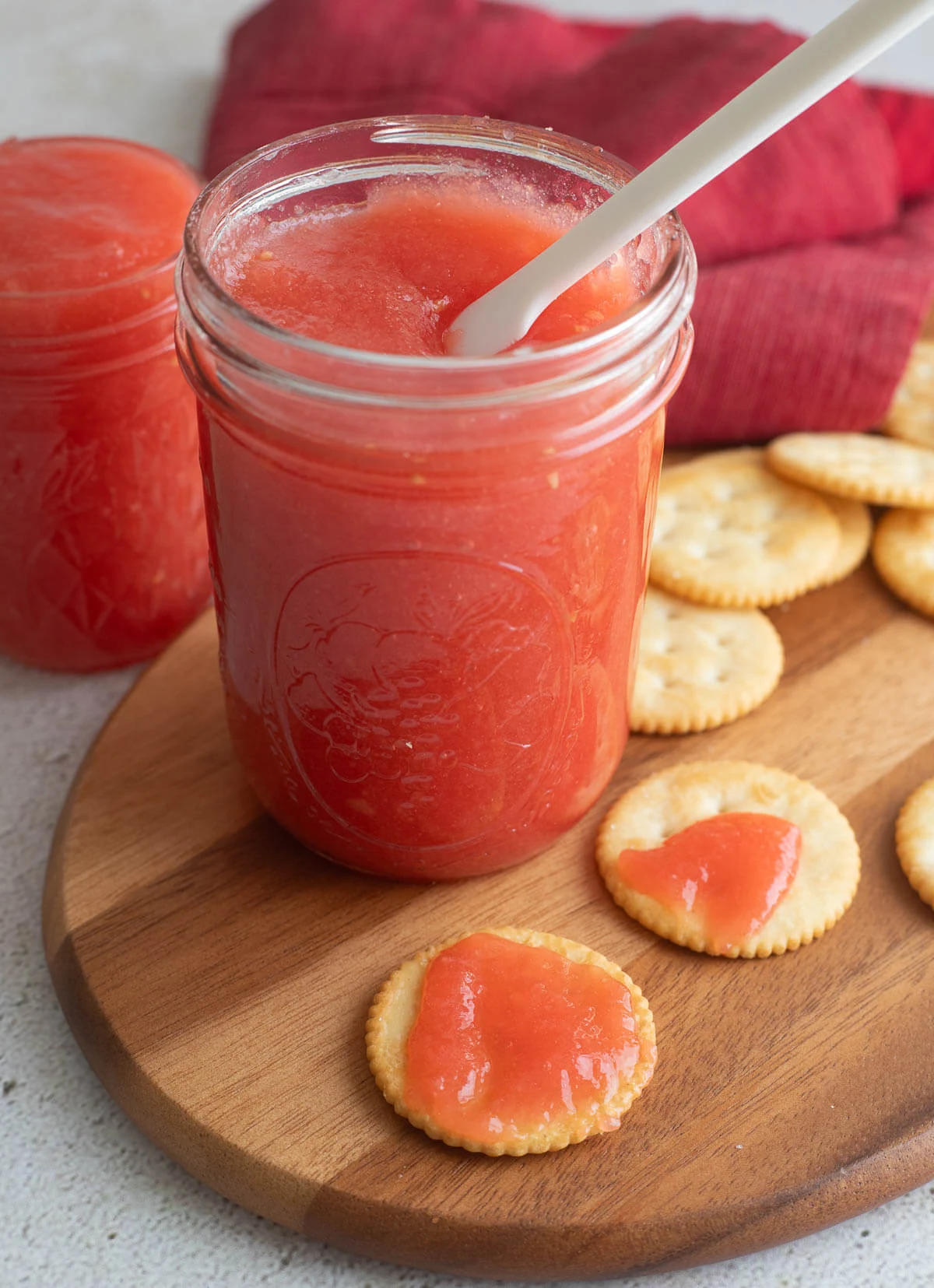
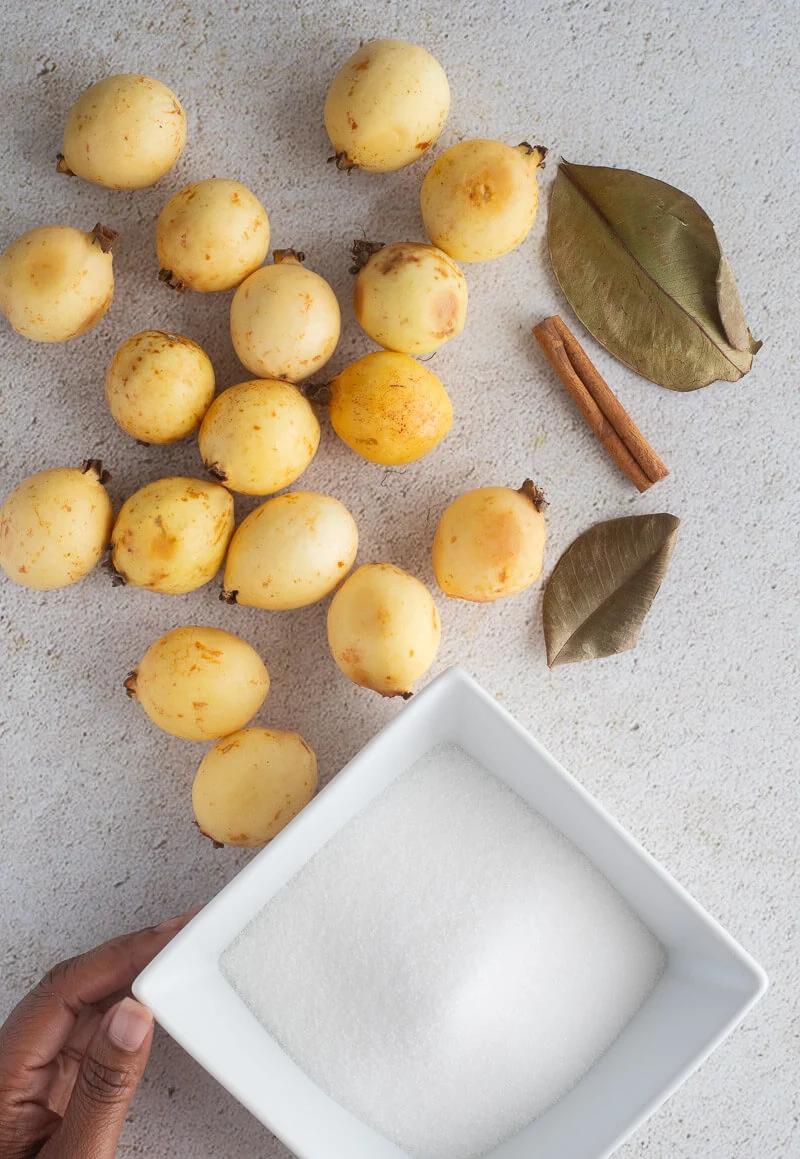
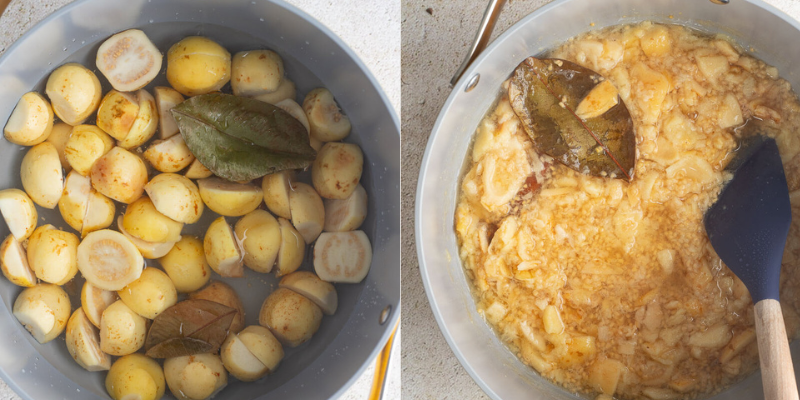
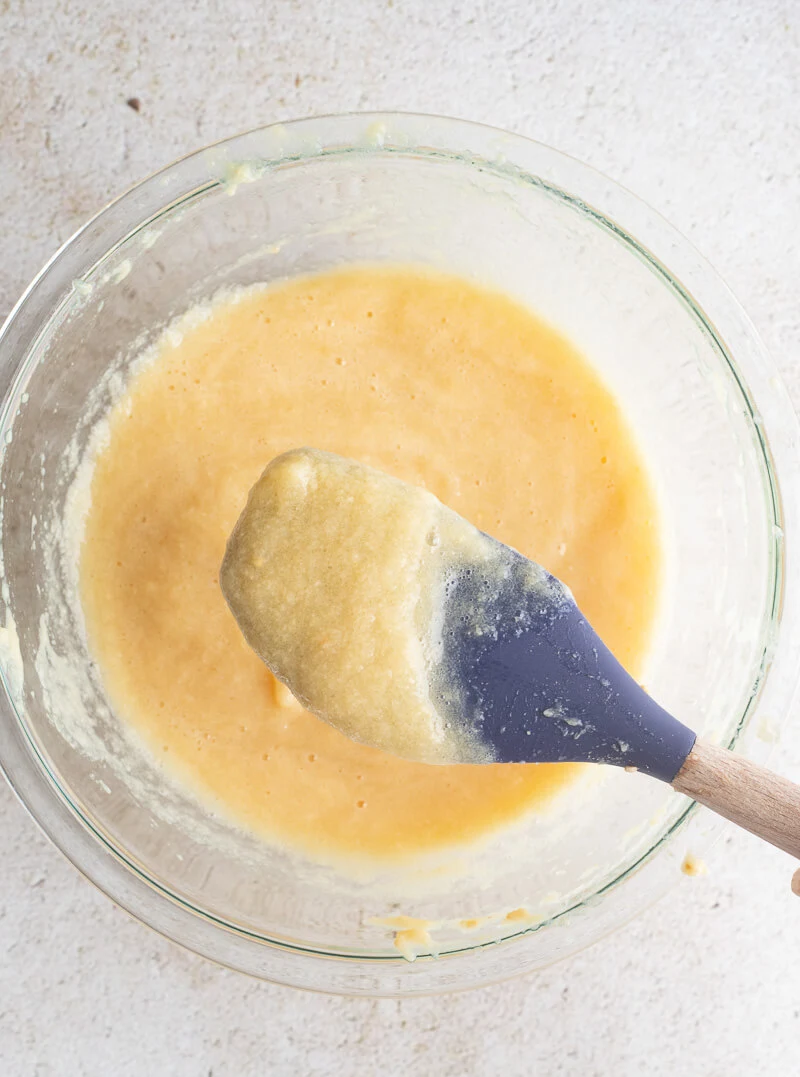
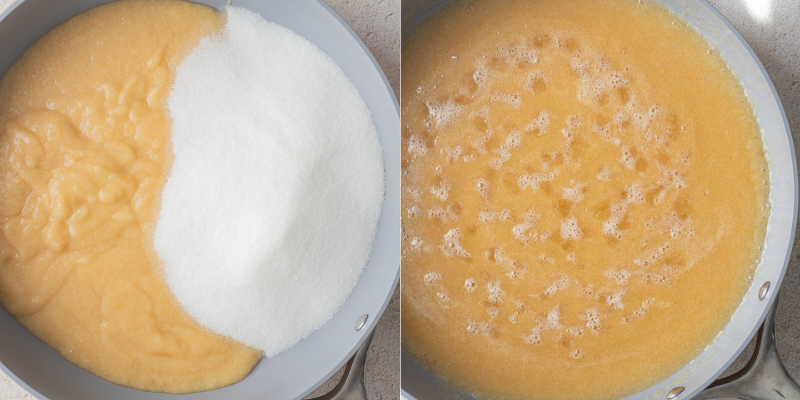
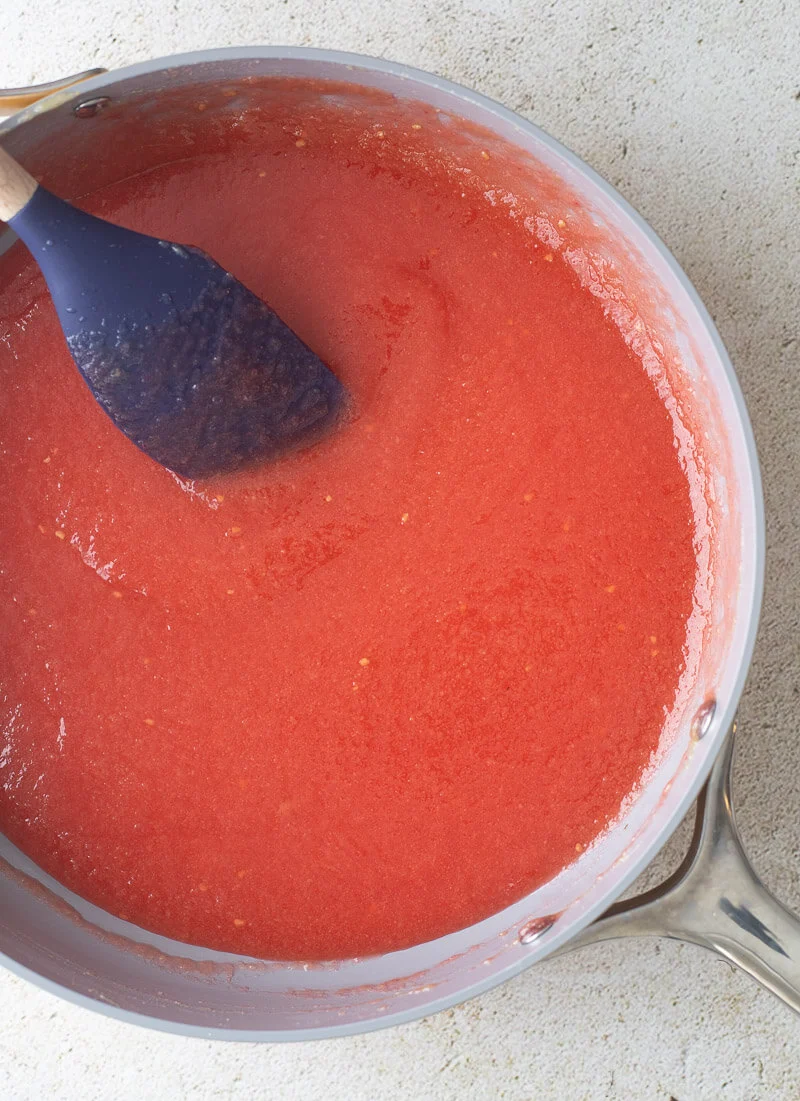
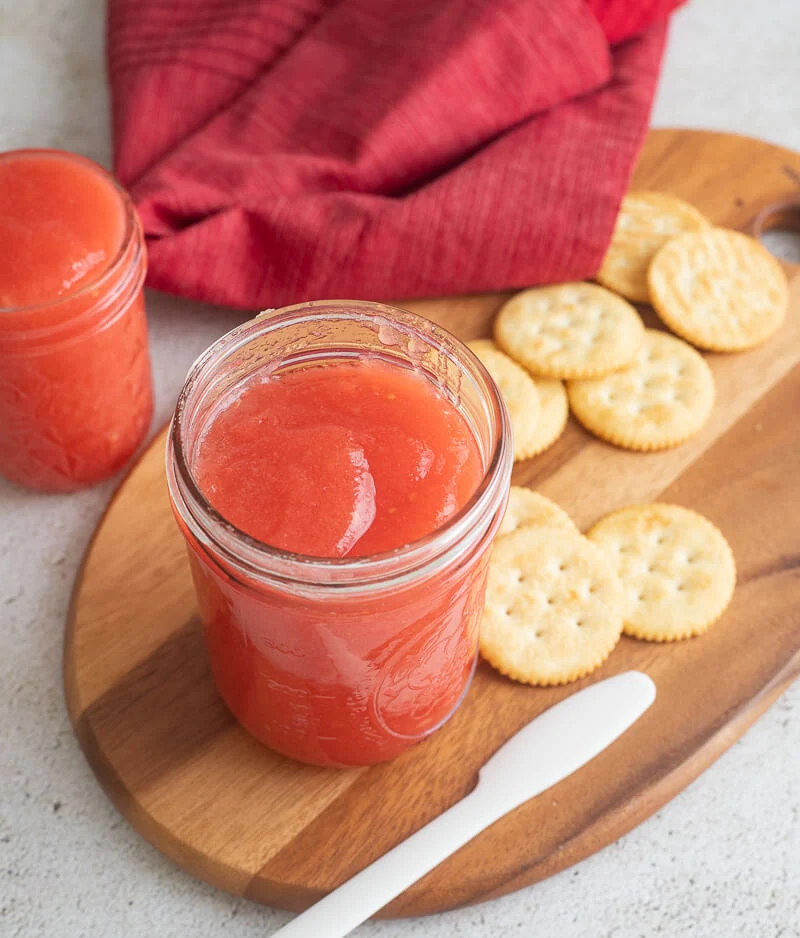
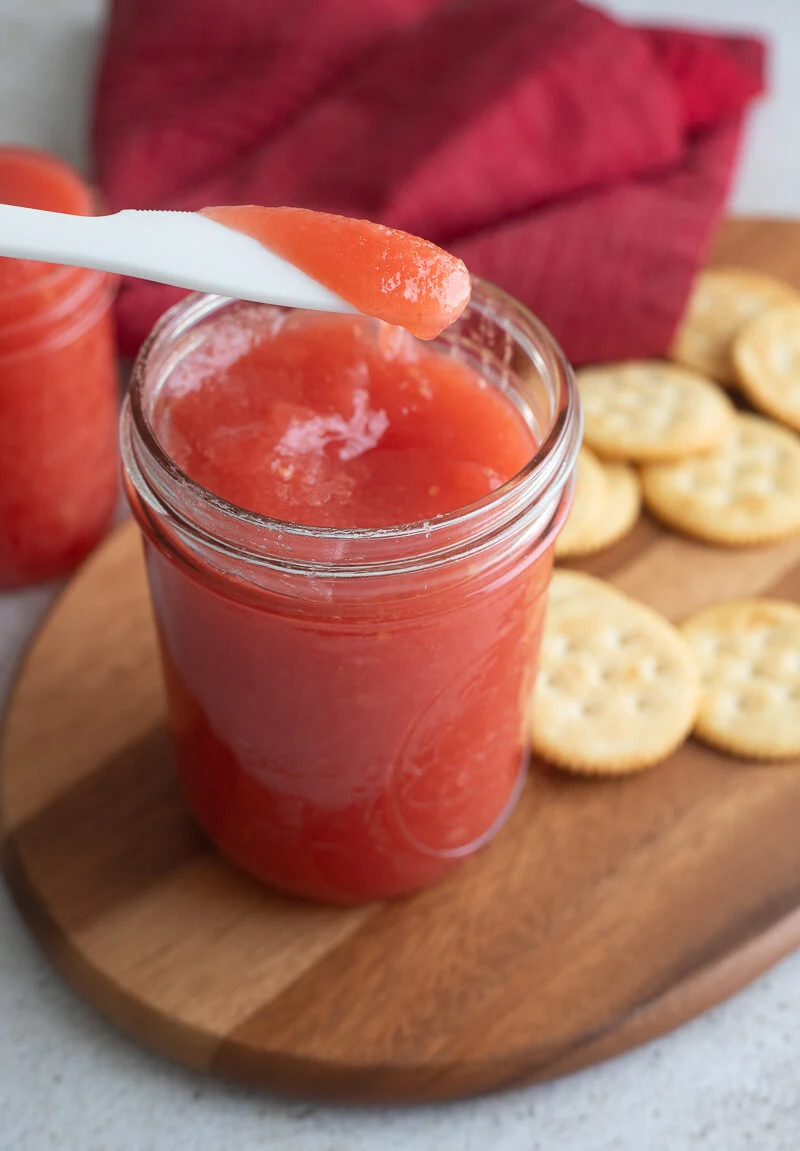
Comments
Post a Comment